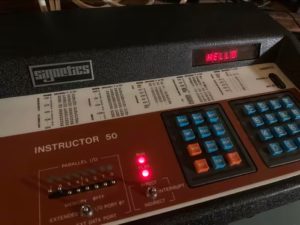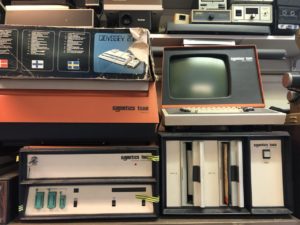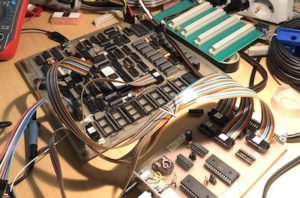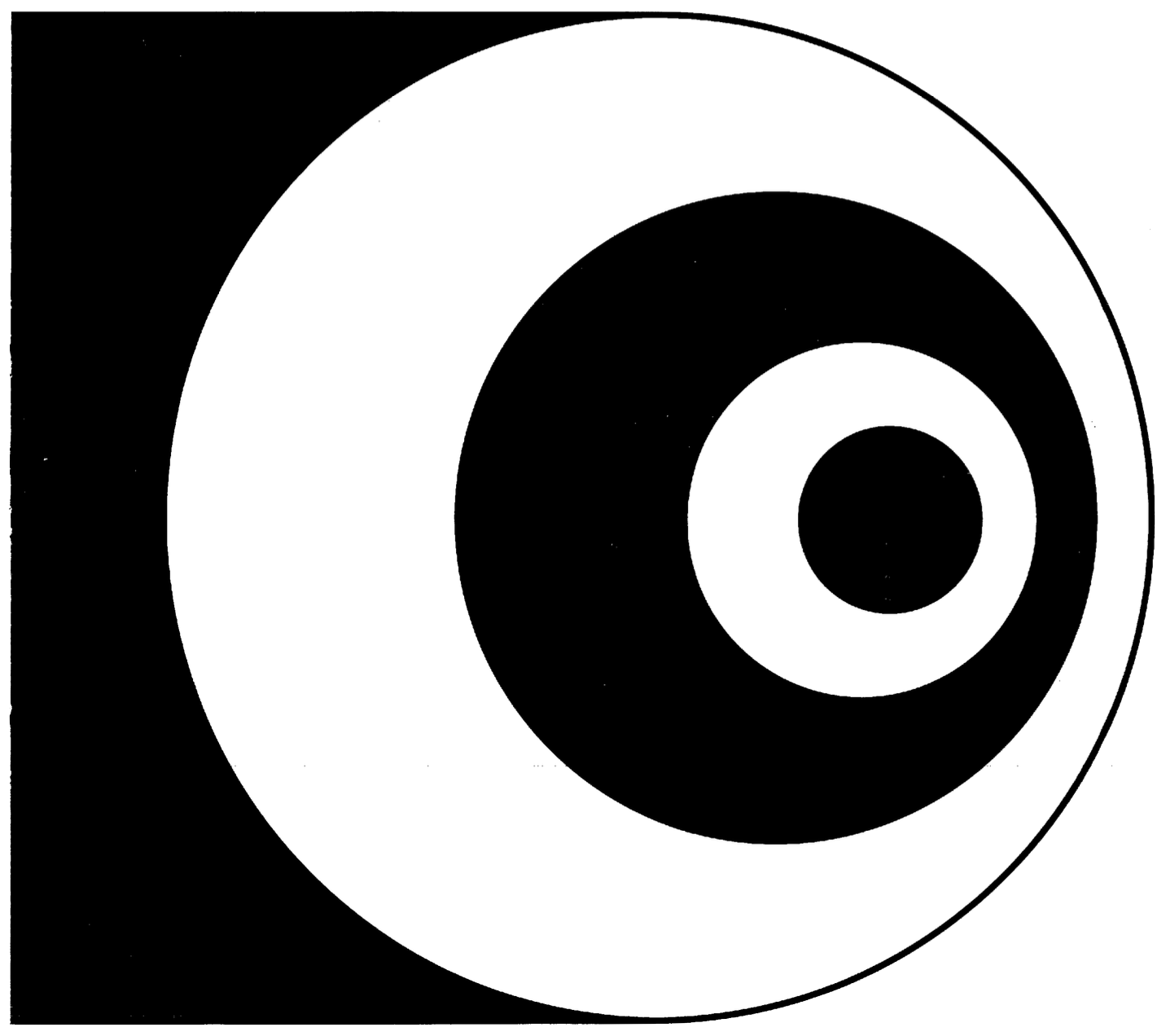About the project
The computers that we use today are evolutions of the IBM personal computer. At the time of its introduction in 1981 this was a reasonable machine. Its hardware and software were decent, sufficient, but it was not in any way a very advanced machine. It is an odd fact of history that the computers that came to dominate the field were not necessary the machines that were technologically the most advanced or innovative. Several systems existed that had better audio and video interfaces, for example. There were other machines, that used different approaches to computing, had innovations that were all but lost, and features that had to be reinvented.
The Signetics 2650 was one of the first single chip microprocessors. At the time of its design in 1972 is was a powerful and elegant microprocessor. However, after it was introduced into the market in 1975 it was quickly overshadowed by other microprocessors. The late ’70s and early ’80s was a period of rapid innovation in microprocessor design. Some of the properties of the 2650 became limitations. Its on-chip 8-level subroutine stack, and its 32 Kbyte address space, for example, required elaborate programming or hardware engineering to work around. Nevertheless, the computer systems based on the 2650 microprocessor had some interesting hardware and software features compared to other systems of that era.
This site exists to shows my progress in restoring several computer systems based on the Signetics 2650 microprocessor. But mainly the purpose of this site is to show that there were alternative approaches, different ideas and other paths in computing before the IBM PC changed the world.



My personal journey
In the early ’80s I built my own computer, based on a kit provided by the Eindhovense Computer Association, a local computer club. Eventually I expanded the kit with a printer interface, a 32 KByte RAM card, a floppy controller and two 5 1/4″ floppy drives. I used it computer for simple word processing and for programming in assembler, Basic, Pascal and Forth. I also added an interface to a box of electronics to create drum sounds, with a simple notation and program to convert sheet music to sound. It has been sitting in my attic after I bought a IBM PC clone. Recently I decided to restore this old bit of history to its former glory, although some of the hardware and all of its software have been lost.
But one thing leads to another, and currently I find myself working on four iconic computers, all based on the same 2650 microprocessor from Signetics. (Information on my Interton VC 4000 game console is not on the website yet).
Read about my progress, reuse the software I wrote, and make use of my discoveries. Are you working on these or similar 2650 computers? Then please leave a note or get in touch. There’s a contact button at the bottom of every page.
Other sites about old computers:
Homecomputer Museum (NL)
Computermuseum der Stuttgarter Informatik (DE)
Marktplaats: buy or sell vintage computers. (NL)
About the 2650 microprocessor:
My wishlist:
Some items that I am looking for. If you have any of these, please drop me a note using the contact button below.
- Original documentation on Central Data DOS.
- Copies of SDOS 3.0, 4.0, 4.1.
- A working 2650B(-1) processor.
- Design or project information on the Signetics TWIN or Millennium Universal One.
